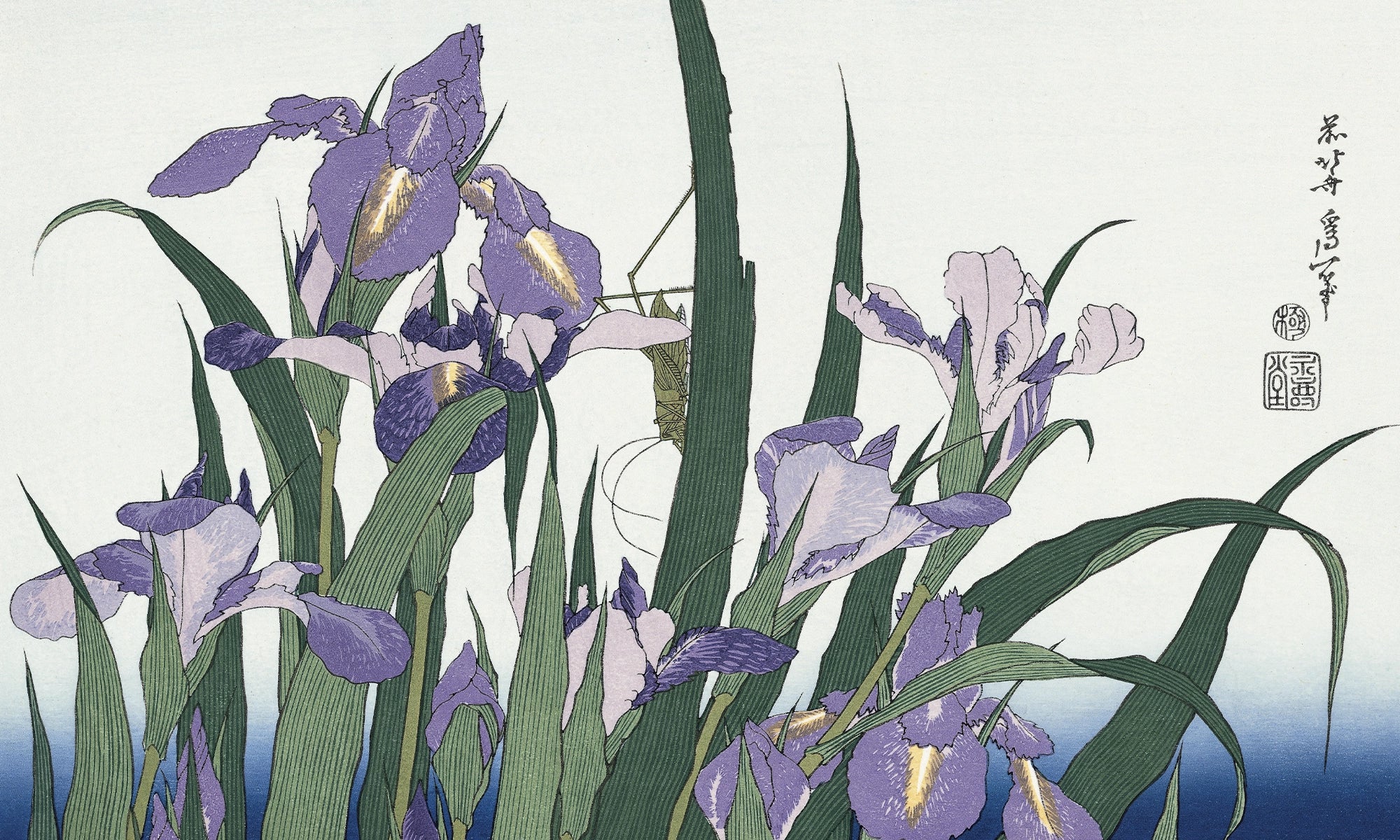
Early Summer
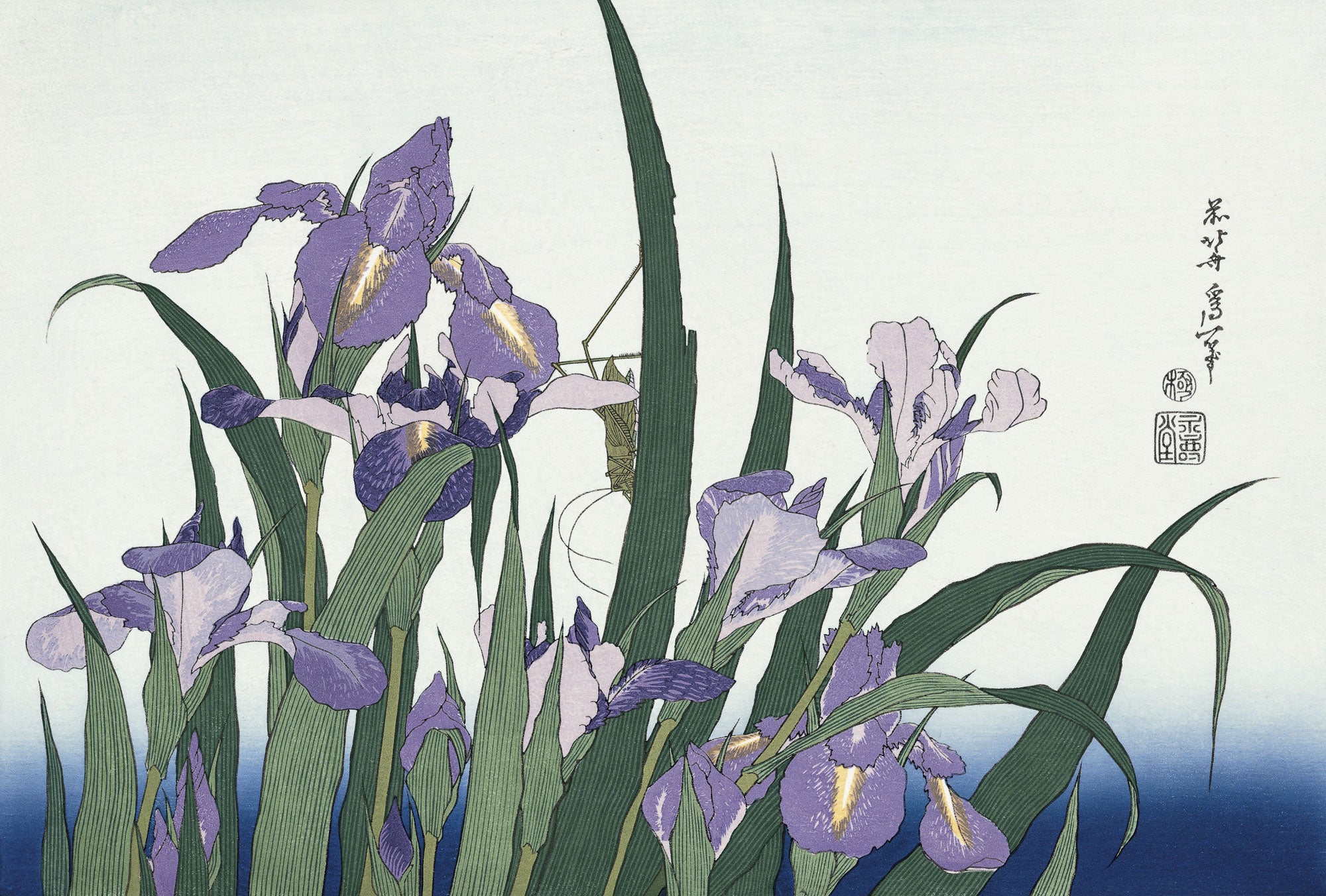
Katsushika Hokusai
"Blossoming Irises and Grasshopper"
This highly regarded print features realistic depiction through the use of elaborate fine lines. The veins of the leaves, consisting of numerous parallel lines, are powerfully depicted and the kirigirisu (Japanese cricket) looks as if it will move at any moment. Close inspection reveals that even the tiny hairs on its legs are presented in precise detail.
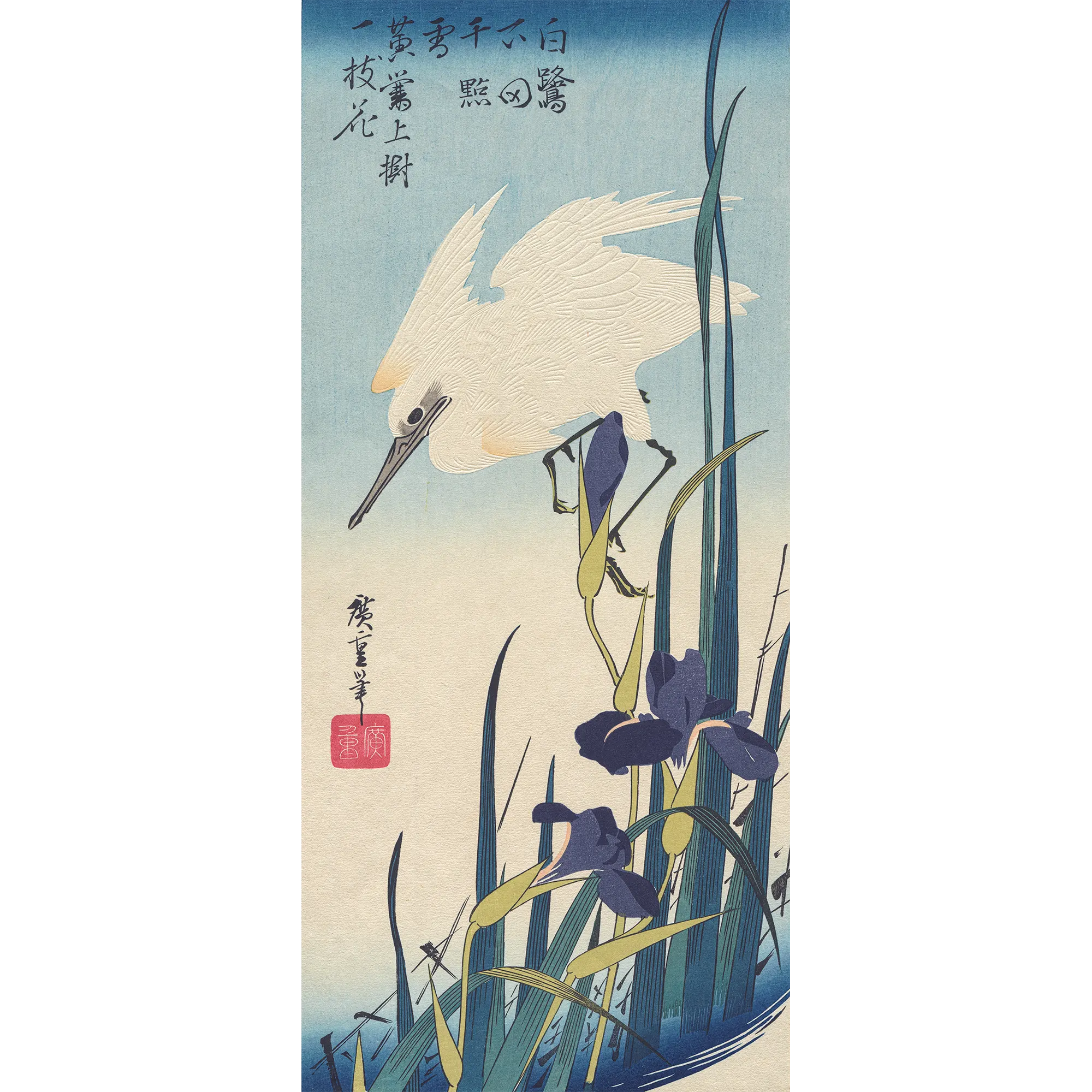
Utagawa Hiroshige
"White Heron and Blossoming Irises"
Colors of the blue family are the key colors in this print and this is typical of Hiroshige's color schemes. The feathers of the white heron are shown in the Karazuri (emboss) technique. A translation of the seven-character verse couplet reads, "White herons alighting on the paddy-field mark it with one thousand dots of snow. A yellow bush-warbler is a single flower on the tree".
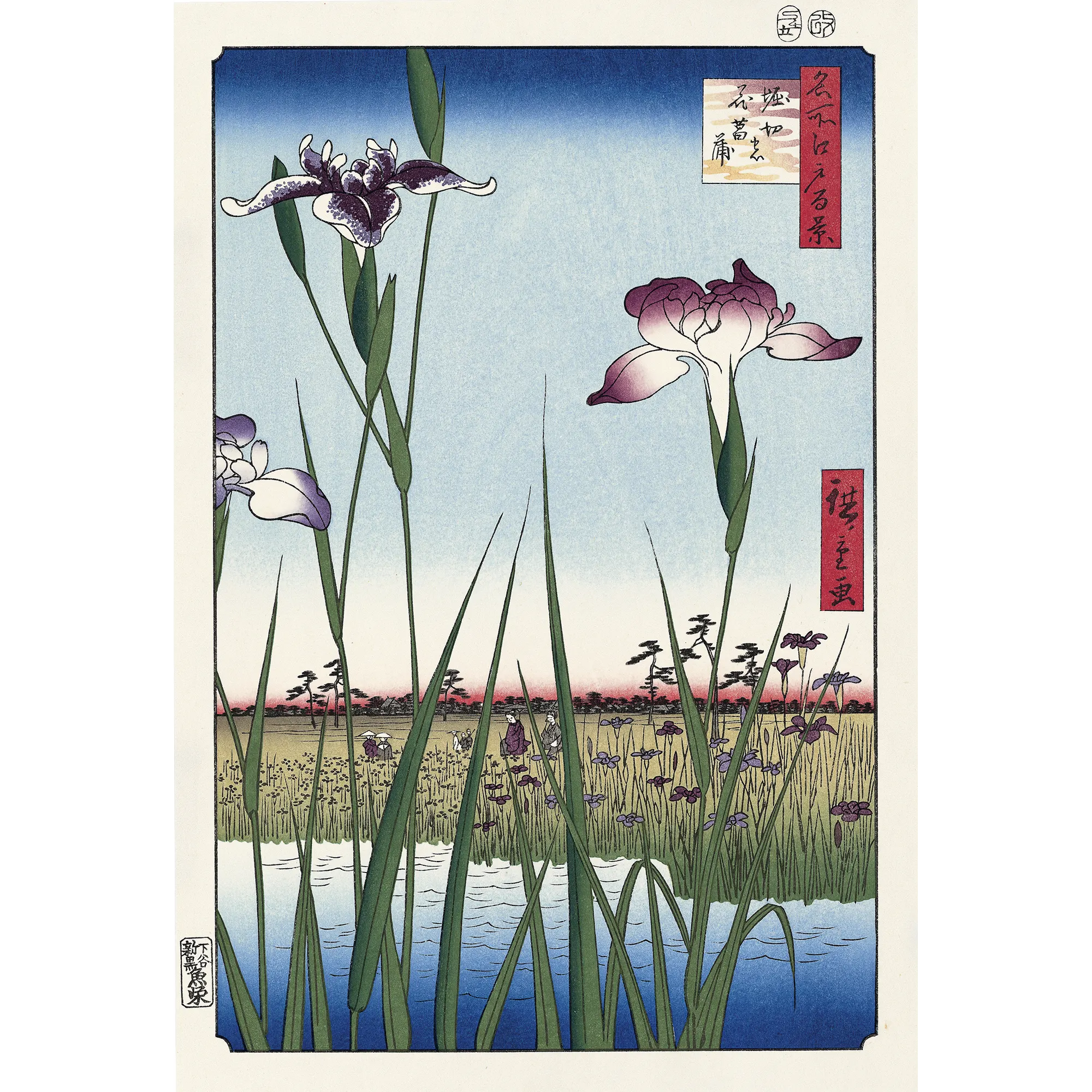
Utagawa Hiroshige One Hundred Famous Views of Edo
"Irises of Horikiri"
Hiroshige sketched three iris plants in the foreground, and people strolling in the garden and a wide horizontal vista in the background. The picture representing Hiroshige’s outstanding skill in composition is very popular with foreigners.The Iris Gardens of Horikiri has been popular since the Tokugawa days. Records say irises of various colors were first planted here by farmer Izaemon during the Bunka Years (1804-18).
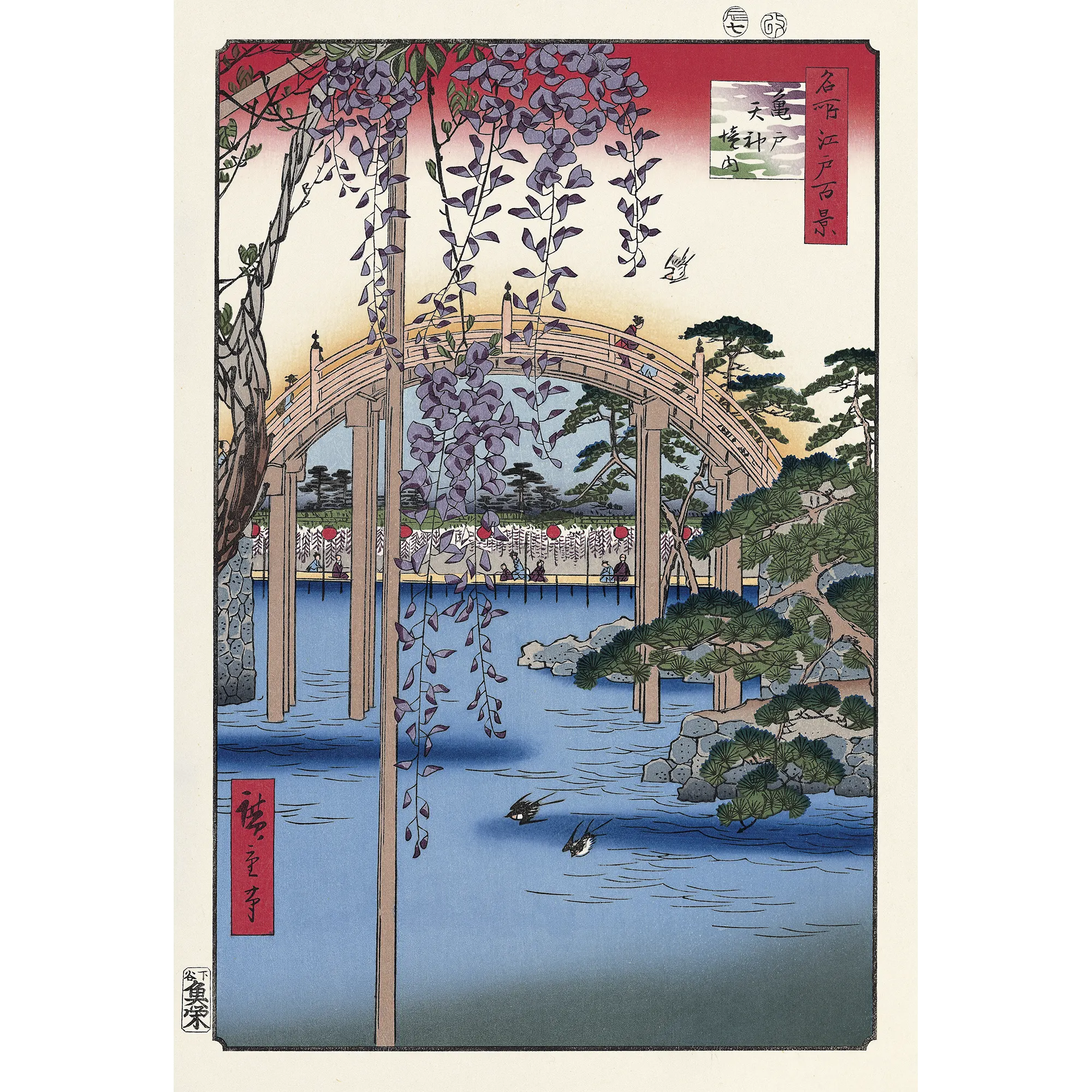
Utagawa Hiroshige One Hundred Famous Views of Edo
"Kameido Tenjin Shrine"
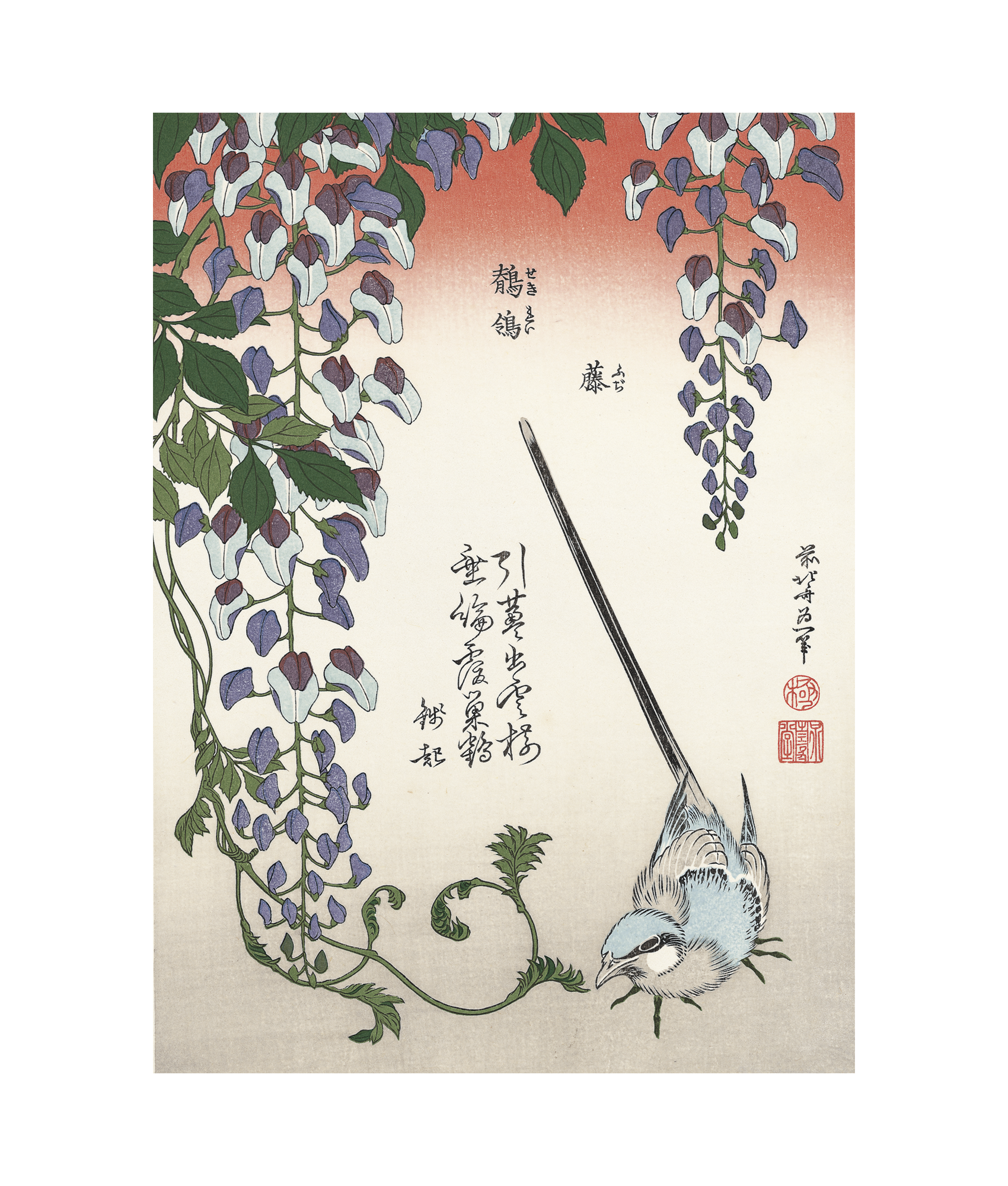
Katsushika Hokusai
"Wisteria and Wagtail"
This is one of ten prints in a famous chuban (small size) series that Hokusai designed ata the age of seventy. Each print is inscribed with a poem. This composition shows a wagtail raising its tail admist elegantly drooping wisteria. Wagtail and Wisteria is considered particularly beautiful because of its subdued of color.

Katsushika Hokusai
"Hydrangea and a Swallow"
The original hydrangea, Hydrangea macrophylla, is native to Japan. Perhaps because this flower naturally grew in Japan, hydrangeas were frequently depicted in ukiyo-e. Particularly, the gradual color change of the flowers from the time they start blooming, with subtly mixed colors, was a favored subject in ukiyo-e. Hokusai effectively uses soft color gradation in this work to depict the intricately changing hydrangea flowers. And Hokusai added a swallow in a steep dive, as if time had stopped. It showcases Hokusai's great skill in capturing a moment in a single work.



